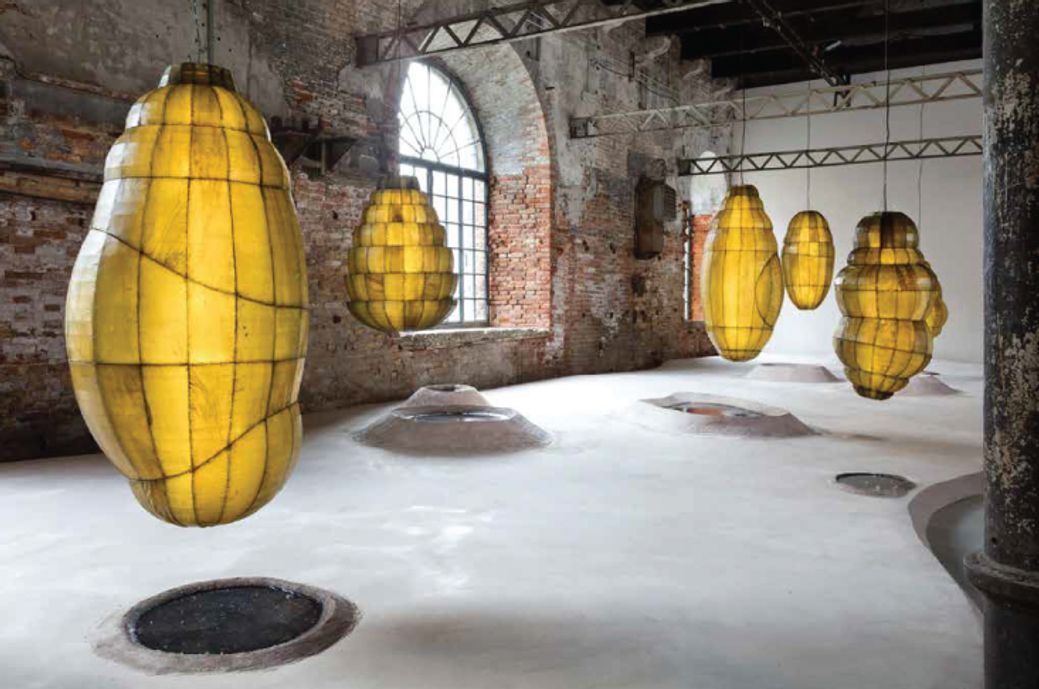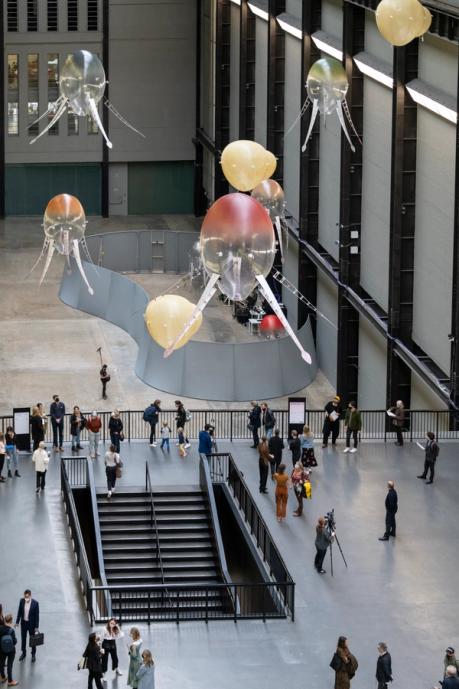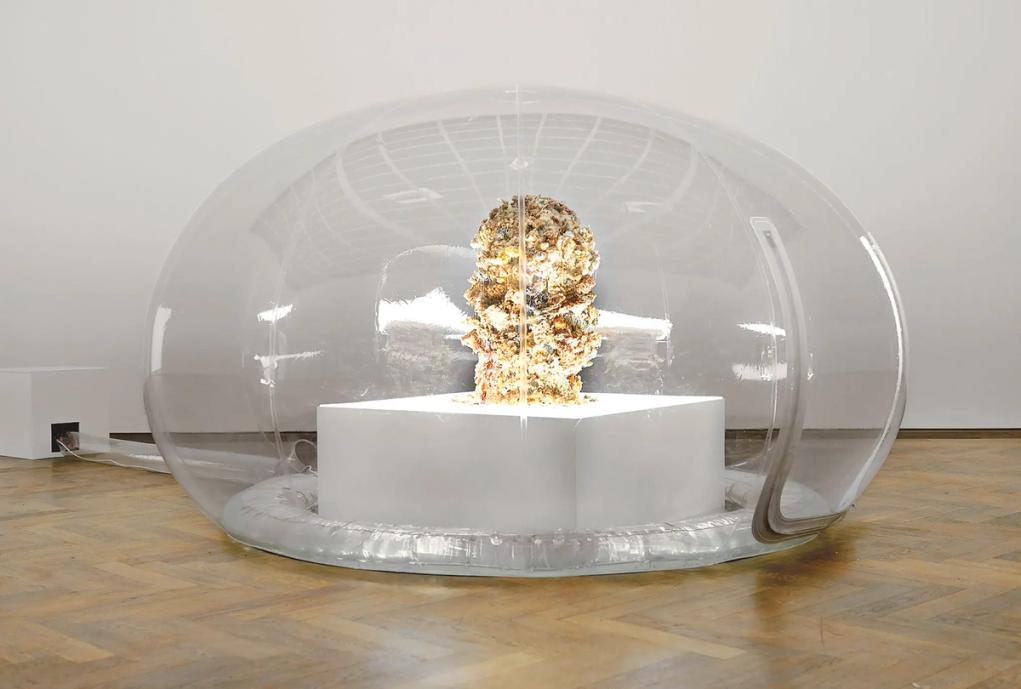Prepare for an extrasensory glimpse into the world of soft robotics, atmospheric justice, and our potential openness towards olfaction. Ancika Yi takes us far and wide into the space that occupies our world — our everyday air, scented in very particular ways to prompt our “sensibilities”.
Seoul-born, New York-based artist Anicka Yi has been challenging power structures for decades, furtively calling out issues associated with femininity, race and identity through uncanny microcosms of scent and biotechnology. Over the last two years, though, she has been invested in the realm of artificial intelligence (AI), working to understand how we might soon live harmoniously amongst machines.

In preparation for the Gargantuan Hyundai Commission exhibition now on view in Tate Modern’s Turbine Hall, Yi experimented with different kinds of intelligence. The beginnings of such were seen at the 2019 Venice Biennale, where she housed animatronic insects in glowing organic cocoons made of kelp and a series of soil ecosystems, using AI monitoring to learn from bacterial development.
In Love With The World, on show until 16 January 2022 at the former Bankside power station, is something she has been ruminating on over the past two years: global social panic and our coming to terms with sharing airspace, not just with other humans but with all beings. A couple of days before the exhibition opened to the public, Yi posted on Instagram: “The unseen world of molecules in the air can excite our appetite, determine who we choose as a partner, or cause us to become gravely ill. Air contains our tension and anxieties. Still, I am In Love With The World.”

Inside the Turbine Hall, a group of genderless biomorphic bodies move autonomously, as if floating in a vast aquarium – which can hardly be said of the seemingly masculine, controlled machines that once inhabited this space. These helium-filled aerobes, developed by Sitara Systems and distinguishable as large semi-transparent eggs called xenojellies, with coloured tops and swishing tentacles, along with planulae, bulb-like blobs covered in short yellow hair, react to scent-scapes reminiscent of the history of that very particular airspace. Working with psychologist Pamela Dalton, who Yi recognises as “an authority on environmental odours,” the artist was able to recreate smells from the historic evolution of Bankside. In a demonstrably empirical work, visitors are enveloped in prehistoric London, in the pungency of war, colonisation and the spice trade, in the fumes of the Industrial Revolution and the water-borne diseases originating from the Thames. Not only the human audience but the dirigibles themselves, respond to the changing scents and social interaction over the course of three months, with unpredictably transforming colours and behaviours.
“What I want or hope for, is that we can really start breaking out of the binary relationship that humans have with machines,” explains Yi in a conversation with former curator Mark Godfrey. “Mostly we believe either that machines are there to serve us or that, if ‘emancipated’, will take over and control us.” Intended as a continuation of her Venice exploration into Biologizing the Machine, Yi explores how humanity’s unjustified taming of animals, bacteria, machines, and —not least— fellow humans, has led to anthropocentric madness in desperate need of rectification, if we are to cope with the climate and humanitarian crises.

In tandem, one of the most press- ing issues — especially during a global pandemic — is the human right to clean air. Yi explains that “those in lower socio-economic groups, and people of colour, often have less access to clean air; they usually live closer to toxic factories that affect the quality of the water and air. These bodies have been hit harder by Covid-19 than white bodies.” In order to incite awareness on what Yi terms ‘atmospheric justice’, she has “sculpted the air by the use of scents, [creating] a conscious experience of the air, as opposed to experiencing the Turbine Hall as ‘empty’ space.”
The xenojellies and planulae have a dedicated maintenance area where they go to recharge every so often. Aside from that, they are free to roam through the air.
Originally published in DAMNº80 Winter 2022.
